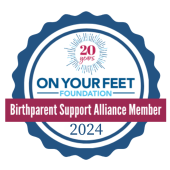
Do You Have to Be Married to Adopt? What You Need to Know:
In the United States, prospective adoptive parents must generally meet state-specific requirements, which typically include being at least 25 years old, completing a home study, and passing background checks.
In Illinois, specifically, single individuals, divorced persons, and married couples are all eligible to adopt. One key stipulation for married couples is that both spouses must jointly file the adoption petition unless they have been separated for over a year. Additionally, children aged 14 and older must consent to their adoption, ensuring their voice is considered.
The goal is to provide a safe, stable, and loving home for the child. Let’s discuss how these requirements ensure the best interests of the child are met.
- Single Parent Adoption
- Same-Sex Couples
- Stepparent Adoption
- Relative Adoption
- International Adoption
Adoption Requirement for Single Individuals and Couples
- Being at least 25 years old
- Completing a home study
- Passing background checks
- Demonstrating physical, emotional, and financial stability
- Providing personal references
- Engaging in adoption education
Legal Procedures in Adoption
- Home Study: An authorized agency conducts a comprehensive home study, evaluating the suitability of the home environment. This includes interviews, home visits, and thorough background checks.
- Placement and Consent of the Birth Parents: This refers to the moment when the child is placed in the care of the adoptive family. Around this time, the birth parent will also execute their consent to the adoption. Typically, with domestic infant adoption, this is sometime after birth, although exact timeframes may vary by state.
- Post-Placement Supervision: Traditionally, there is a monitoring period following the child’s placement with the adoptive family during which an agency social worker may conduct periodic visits to assess the child’s well-being and ensure the adoptive family is adjusting well.
- Finalization: After the child has lived with the adoptive parents for a specified period (often three to six months), a final adoption hearing occurs. The judge reviews all documentation and, if satisfied, issues a judgment of adoption.
- New Birth Certificate: Post-adoption, a new birth certificate is issued listing the adoptive parents as the child’s legal parents. The original birth certificate is sealed to ensure privacy.
Each step in the adoption process ensures that the child’s best interests are prioritized and upheld. Completing these steps successfully leads to the formation of a legally recognized and thoroughly vetted family unit.
Adoption laws are designed to prioritize the child’s best interest, focusing on creating stable, loving homes. Regardless of being single or partnered, adoption remains accessible to those committed to growing their family through this uniquely special process. Prospective adoptive parents should educate themselves about specific state requirements and seek guidance from reputable adoption agencies.
We invite you to take the next step towards building your family. Visit the Adoption Center for Family Building or contact us here to learn more about how we can support you in your adoption process.





